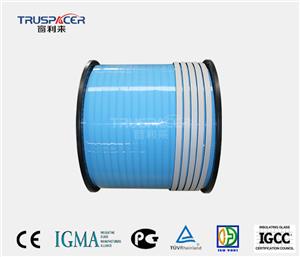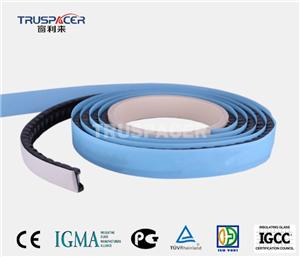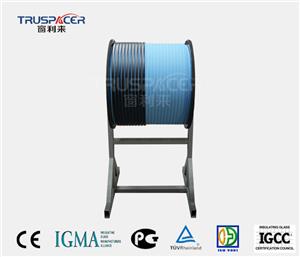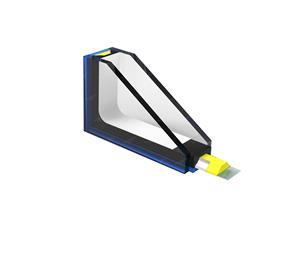The role and product performance of each component in the Truspacer insulating glass sealing spacer
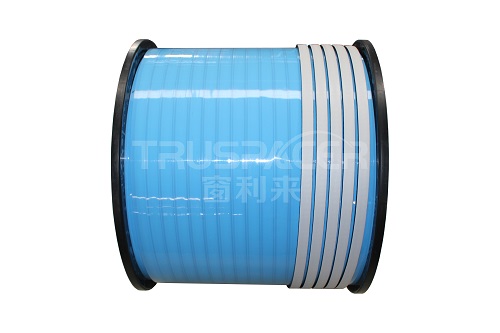
The role of each component in the Truspacer insulating glass sealing spacer:
The butyl sealant used in the Truspacer strip can effectively resist the penetration of water vapor into the hollow glass. The water vapor transmission speed of the butyl sealant is the lowest among all sealants such as silicone rubber, polysulfide rubber, and polyurethane rubber. Butyl sealant has the dual functions of physical bonding and chemical bonding, which can ensure the best bonding performance between the sealant and the glass. The adhesive force between the adhesive strip and the glass can reach and maintain the maximum value with the increase of time.
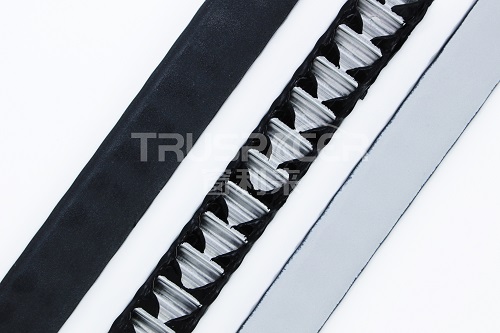
1. The function of the spacer layer, according to the required thickness of the air layer, evenly separate the two pieces of glass;
2. The continuous wavy aluminum spacer strip in the rubber strip can further isolate the water vapor; the wavy shape of the aluminum strip and the aluminum foil film polymer heat insulation strip together provide the support and stability between the two pieces of glass, and control at the same time The thickness of the insulating glass spacer layer; after the final corner is sealed, the powdered molecular sieve mixed in the sealant begins to absorb the water vapor remaining in the insulating glass;
3. During the entire life of the insulating glass, the molecular sieve will always absorb the water vapor entering the insulating glass and keep the inside of the insulating glass clean and clean. Due to the longer moisture barrier, Truspacer tape can effectively reduce the amount of water vapor penetrating into the insulating glass and ensure that the desiccant inside the tape has a longer service life.
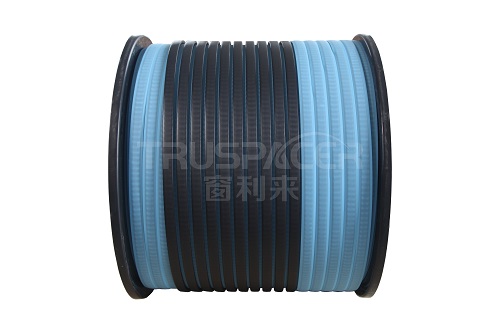
Truspacer sealing spacer product performance:
Because molecular sieves are mixed inside the sealant, molecular sieves will not quickly absorb unnecessary water vapor during the production of insulating glass, but will continue to absorb water vapor inside the insulating glass after the production of the insulating glass, and the dew point will eventually be lower than- 65°C. The time for the dew point to drop to this level depends on many factors, including:
The activity of the desiccant inside the Truspacer strip;
The moisture content in the air during the hollow glass manufacturing process;
The temperature of the place where the insulating glass is stored;
The size of insulating glass;
The size of the Truspacer tape;
In the process of making hollow glass for Truspacer tape, molecular sieves are mixed in the sealant and there is an isolation film attached to the surface of the tape, so the effective adsorption rate of the molecular sieve inside the hollow glass is retained to the maximum.

